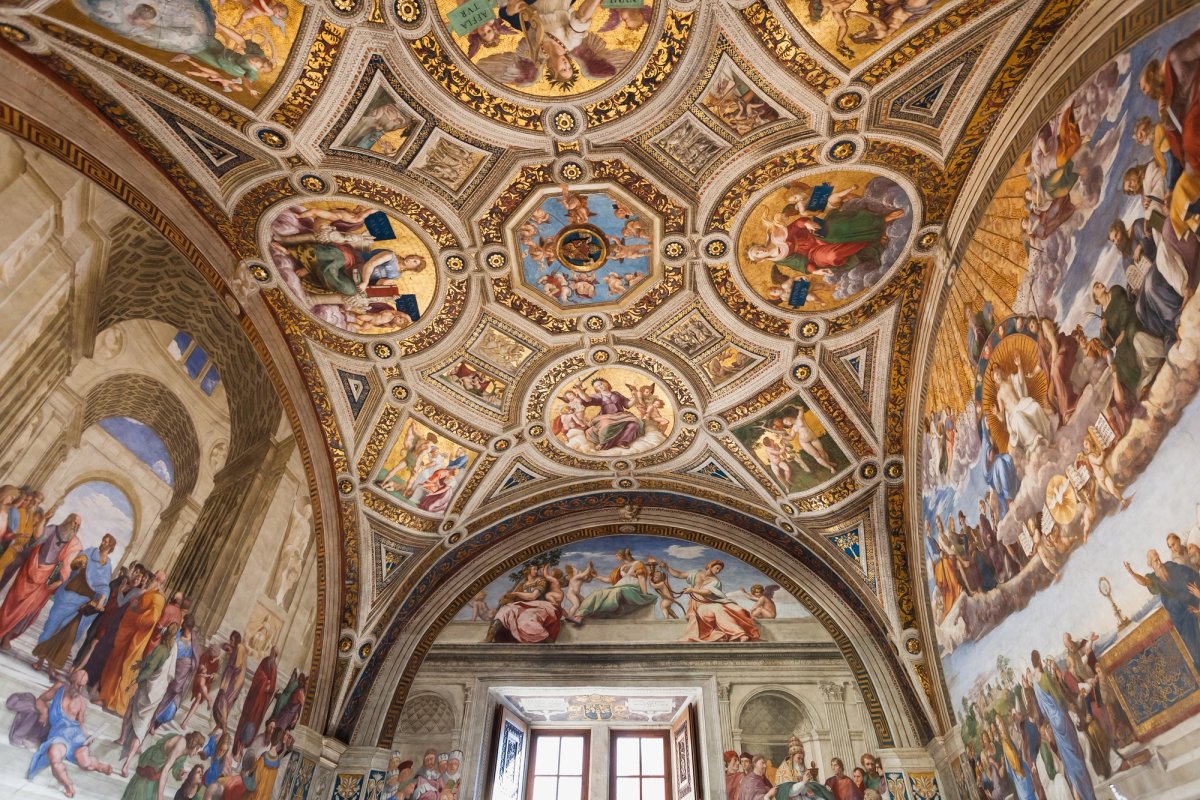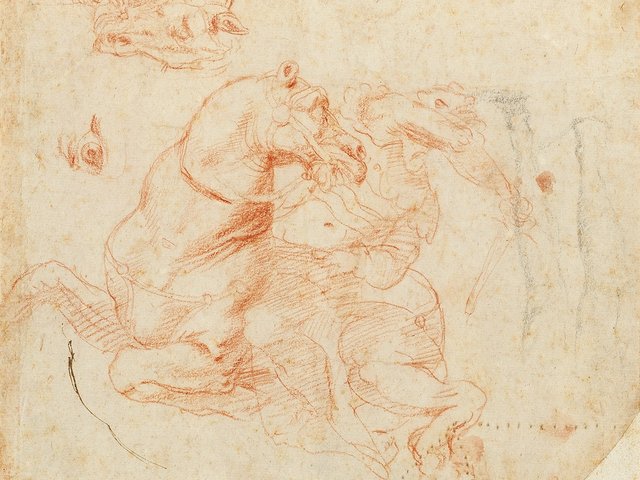Restoration work on the Hall of Constantine at the Vatican has revealed an innovative mural painting technique that the Renaissance artist Raphael experimented with. The hall, part of the Raphael Rooms at the Apostolic Palace, was reopened last week following a ten-year restoration of all four of these spaces.
“With this restoration, we rewrite a part of the history of art,” the Vatican Museums’ director Barbara Jatta told Associated Press.
The restoration confirmed previous reports that Raphael wished to paint imagery directly onto the walls of the four rooms. Two female figures, uncovered in the Hall of Constantine during a previous restoration and attributed to Raphael, were found to be painted in this way—supporting the fact they are indeed by the master. In an accompanying film, Jatta says that “we now have two more [official] Raphaels to add to the catalogue”.
Elsewhere, technicians found a grid of nails embedded in the hall’s wall, which are believed to have been used to hold place the natural resin surface Raphael intended to paint on. “From a historical and critical point of view, and also technical, it was truly a discovery,” Fabio Piacentini, one of the chief restorers told AP.
Pope Julius II commissioned Raphael to paint the four rooms at the beginning in 1508 after other artists, such as Perugino, “disappointed” the pontiff, says the Vatican Museums website.
The Hall of Constantine, for which Raphael collaborated with his students, is dedicated to the fourth-century Roman emperor Constantine. “The frescoes are dedicated to the life of Constantine and symbolically represent the victory of the Church over paganism,” adds Vatican Museums.
The museums’ scientific research department also played a crucial role, using infra-red imaging and targeted chemical analysis, say officials who added that “the entire project was also documented through a 3D model created with laser scanning—now considered a benchmark for the integrated study of large-scale artistic decorations”.
Raphael died in 1520, at the age of 37 before the hall was finished. The project was completed in 1524 by Raphael’s pupils and by his main collaborator Giulio Romano, while the ceiling was painted by Tommaso Laureti. The students could not master the oil technique Raphael had been trying out, Jatta explained to AP, and so the rest of the paintings in the room are frescoes.



